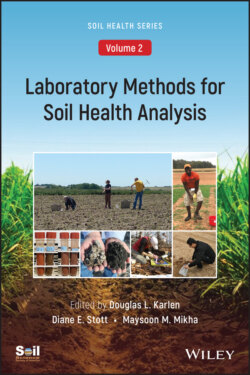Читать книгу Laboratory Methods for Soil Health Analysis, Volume 2 - Группа авторов - Страница 10
Оглавление
Dedication
These books are dedicated to Dr. John W. Doran, a retired USDA‐ARS (Agricultural Research Service) Research Soil Scientist whose profound insight provided international inspiration to strive to understand the capacity of our fragile soil resources to function within ecosystem boundaries, sustain biological productivity, maintain environmental quality, and promote plant and animal health.
Understanding and quantifying soil health is a journey for everyone. Even for John, who early in his career believed soil quality was too abstract to be defined or measured. He initially thought soil quality was simply too dependent on numerous, uncontrollable factors, including land use decisions, ecosystem or environmental interactions, soil and plant management practices, and political or socioeconomic priorities. In the 1990s, John pivoted, stating he now recognized and encouraged the global soil science community to move forward, even though perceptions of what constitutes a good soil vary widely depending on individual priorities with respect to soil function. Continuing, he stated that to manage and maintain our soils in an acceptable state for future generations, soil quality (soil health) must be defined, and the definition must be broad enough to encompass the many facets of soil function.
John had profound impact on our careers and many others around the World. Through his patient, personal guidance he challenged everyone to examine soil biological, chemical, and physical properties, processes, and interactions to understand and quantify soil health. For Diane, this included crop residue and soil enzyme investigations, and for Maysoon, interactions between soil physical and biological processes mediated by water‐filled pore space. Recognizing my knowledge of soil testing and plant analysis on Midwestern soils, as well as root‐limiting, eluviated horizons and soil compaction in Southeastern U.S. soils, John encouraged me to develop a strategy to evaluate and combine the biological, chemical, and physical indicators that have become pillars for soil quality/health assessment. The Soil Management Assessment Framework (SMAF) was the first generation outcome of this challenge.
Throughout his life, John endeavored to involve all Earth's people, no matter their material wealth or status, in translating their lifestyles to practices that strengthen social equity and care for the earth we call home. Through development of the “soil quality test kit” John fostered transformation of soil quality into soil health by taking his science to farmers, ranchers, and other land managers. These two volumes have been prepared with that audience in mind to reflect the progress made during the past 25 years. Special thanks are also extended to John’s life mate Janet, daughter Karin, son‐in‐law Michael, grandchildren Drew and Fayth, and all of his friends for their encouragement, patience and support as he continues his search for the “holy grail” of soil health. Without John’s inspiration and dedication, who knows if science and concern for our fragile soil resources would have evolved as it has.Thank you, John – you are an inspiration to all of us!
